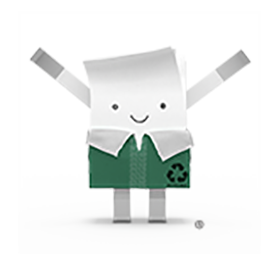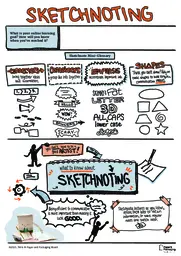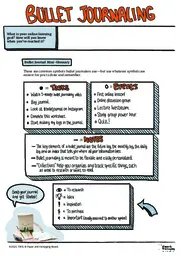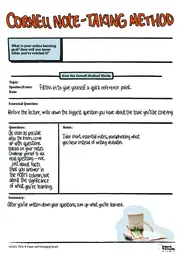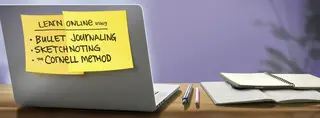
Paper is still your ally in making learning yours. Whether you played with board books as a toddler, finished worksheets of multiplication tables in grade school or handwrote notes in high school, paper helped you make learning tangible. Now, as an adult, you have access to a universe of information thanks to online learning, and paper should still be a part of your learning journey. Paper teaches us how to learn.
Plus, after you’re finished with your notes, you can do your part to recycle those paper notecards, file folders, sticky notes and loose-leafs. In 2023, paper had a recycling rate 65-69% in the U.S. Let’s work together to increase that rate by recycling paper products when we can! Follow these guidelines for recycling right.
Three paper-based tools in particular can help you get more from what you’re learning: sketchnoting, bullet journaling and the Cornell note-taking method. Here’s what you need to know.
Sketchnoting
What it is: A form of note-taking that uses sketches along with written notes. Sketchnoting can be done as you listen to a lesson, after a lesson to boost comprehension and memory retention, and as support for any self-guided learning.
Why it works: Research shows that we’re likelier to remember information if we draw it. Plus, it’s fun! People who try it say they enjoy it.
How to get started:
- Spend a few minutes browsing #sketchnotes on Instagram to see a variety of sketchnoting examples.
- Watch this lesson on sketchnoting basics from Emily Mills, author of The Art of Visual Notetaking. Feel daring? Try sketchnoting it.
- Print out our worksheet and start sketchnoting.
Bullet Journaling
What it is: Using a notebook to record tasks, notes, thoughts and other information using a system of symbols that help you stay on task and capture information in one place.
Why it works: Writing down to-dos and information in one place that’s free of digital distraction is convenient and lets people easily track progress on their goals.
How to get started:
- Read this article for an overview of bullet journaling.
- Browse the #bulletjournal hashtag on Instagram to see how enthusiasts are using it.
- Print out our worksheet and start bullet journaling.
Cornell Note-Taking System
What it is: A simple two-column system of taking notes that boosts comprehension and reflection. Regular notes go in the right column, questions prompted by the material go in the left column, and a summary goes at the bottom.
Why it works: Taking notes by hand helps you understand and remember information. The Cornell method in particular reinforces this by directly asking learners to contextualize and sum up information.
How to get started:
- Read the basic steps of Cornell-style notes, and compare them with other structured note-taking techniques.
- Print out our Cornell notes printable and multiple copies of our template—you’ll start taking better notes right away.

